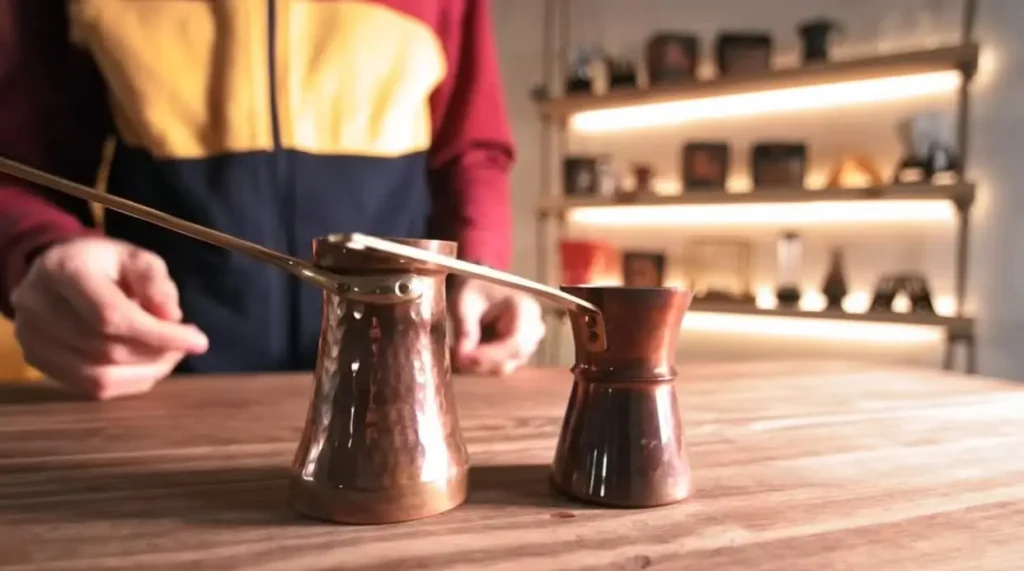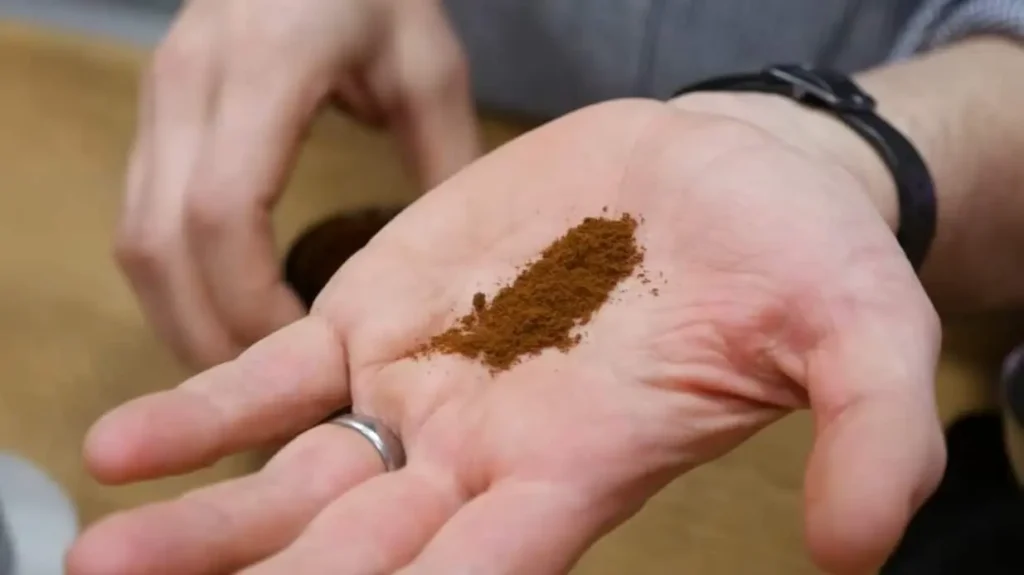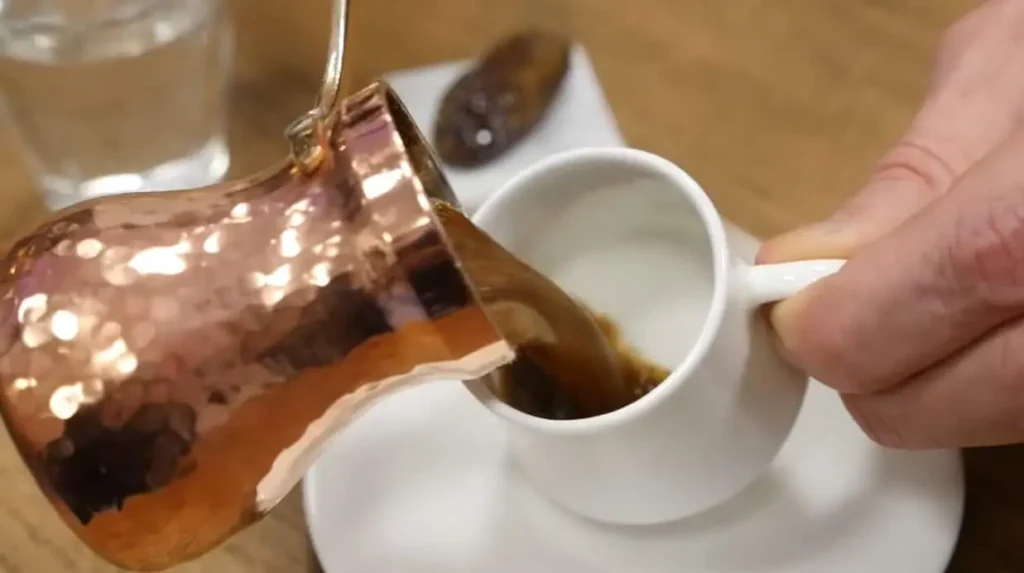Are you ready to experience the rich and unique flavors of Turkish coffee brewed with an Ibrik? This traditional method of coffee preparation has been cherished for centuries and is a true delight for coffee enthusiasts.
Today, we will walk you through the simple steps to create a perfect cup of Turkish coffee using an Ibrik, allowing you to savor its intense aroma and strong taste.
Essential Ingredients for Turkish Coffee
Master the art of selecting the right coffee beans, water, and sugar to create a rich and aromatic cup of Turkish coffee that will transport you to the vibrant streets of Istanbul.
Type Of Coffee Beans

One of the crucial elements in making Turkish coffee is the choice of coffee beans. The traditional and most preferred type of coffee for making this rich and aromatic beverage is finely ground Arabica beans.
Arabica beans are renowned for their distinctive taste and lower acidity, which perfectly complements the brewing process of Turkish coffee. Their fine grind is essential to achieve the unique texture and flavor that sets Turkish coffee apart from other coffee brewing methods.
Water Quality
The quality of water used to brew Turkish coffee greatly impacts the overall taste and aroma. Using fresh, clean, and cold water is essential for a perfect cup of coffee. Avoid using water that is high in minerals or chlorinated, as it may alter the flavor of the coffee. Filtered or spring water is often recommended for its purity.
Remember, the quality of water directly affects the quality of your Turkish coffee, so it is worth investing in good water.
Recommended Read: How To Make Coffee Brewing Water At Home
Sugar And Spice Preferences
Sugar and spice preferences vary from person to person, and Turkish coffee allows you to customize your cup to suit your taste. Traditional Turkish coffee is often brewed with a small amount of sugar added during the brewing process.
However, you can also opt for no sugar or adjust the sweetness level according to your liking. The choice of spices, such as cardamom or cinnamon, is also a personal preference. These spices add a delightful aroma and depth of flavor to the coffee. Experiment with different amounts and combinations to find your perfect cup.
Selecting The Right Ibrik
The ibrik, also known as a cezve, is a small, long-handled pot specifically designed for making this rich and aromatic coffee. Here are two important factors to keep in mind when choosing the right ibrik: material and size, and handle and pouring spout.

Material And Size Considerations
The material and size of the ibrik play a significant role in the overall taste and quality of your Turkish coffee. It’s important to choose an ibrik that is made from a heat-conductive material, such as copper or brass, as this ensures even heat distribution and proper brewing.
Size is another crucial consideration when selecting an ibrik. The size of the ibrik should match the amount of coffee you intend to brew. Typically, a smaller ibrik with a capacity of 2-4 ounces (60-120 ml) is ideal for brewing one to two cups of Turkish coffee. For larger gatherings, you may opt for a bigger ibrik. Just remember, the size of the ibrik will affect the brewing time, so choose accordingly.
| Material | Size |
| Copper or brass | 2-4 ounces (60-120 ml) for one to two cups |
Handle And Pouring Spout
The handle and pouring spout are essential elements of the ibrik that greatly impact your coffee-making experience. When choosing an ibrik, ensure that the handle is long and made of heat-resistant material. This not only provides a comfortable grip while brewing but also prevents burns when pouring the hot coffee.
The pouring spout of the ibrik also plays a crucial role in achieving the characteristic foamy texture of Turkish coffee. A narrow and elongated spout helps control the flow of the coffee and allows you to pour slowly and steadily. Look for an ibrik with a thin and tapered spout for optimum control over the pouring process.
- Choose an ibrik with a long handle made of heat-resistant material
- Opt for an ibrik with a narrow and elongated pouring spout
Preparing The Coffee Beans
Now that you’ve got your ibrik filled with water and your coffee beans ground to perfection, it’s time to prepare the coffee. This is where the art of making Turkish coffee truly comes to life.
Grinding The Coffee Beans

Grinding the coffee beans is an essential step in making Turkish coffee as it allows you to extract the rich flavors and aromas. The ideal grind for Turkish coffee is a fine powder, similar to the texture of cocoa powder. This fine grind ensures that the coffee will dissolve completely in the water, delivering a smooth and full-bodied cup of coffee.
To achieve the perfect grind, it is recommended to use a burr grinder. This type of grinder provides a consistent and uniform grind size, which is crucial for Turkish coffee.
Recommended: Best Espresso Grinder Under 500
Brewing Turkish Coffee with Ibrik/Cezve
Making Turkish coffee with an ibrik involves a delightful brewing process that emphasizes traditional methods of preparation. Here’s a detailed guide:

Measuring The Water-To-Coffee Ratio
To achieve the perfect cup of Turkish coffee, precision is key when it comes to measuring the ingredients. The standard ratio for Turkish coffee is one heaping teaspoon of coffee grounds per demitasse cup, which is typically about 2 ounces (60 ml). Keep in mind that this ratio can be adjusted according to your personal preference for a stronger or milder taste.

To measure the coffee accurately, use a teaspoon to scoop the ground coffee and pile it up until it forms a small mound. This will give you the right amount of coffee for that rich and robust flavor. Remember, the key is to measure, not pack, the coffee into the spoon to avoid over-extraction or dilution of the coffee grounds.
In addition to the coffee grounds, it’s also important to measure the water accurately. The ratio of water to coffee is typically one cup of water for each cup of coffee. This ensures the right balance and allows for proper extraction of flavors. If you prefer a stronger cup of coffee, you can reduce the amount of water slightly.
Heating The Water

Pour the desired amount of water into the ibrik, keeping in mind that Turkish Ibrik Coffee is typically brewed in small quantities. Place the ibrik over a low heat source, such as a gas stove or a heat diffuser. Slowly heat the water until it reaches a temperature just below boiling point. This gentle and gradual heating allows the flavors to develop without scorching the coffee.
Adding Coffee And Stirring

Once the water is heated, add the finely ground coffee directly into the ibrik. Be mindful of the foam that may form during this step. Stir the mixture gently with a long-handled spoon to ensure the coffee grounds are evenly distributed and fully immersed in the water. Avoid stirring vigorously to prevent disturbing the foam.
Simmering And Creating The Foam
Return the ibrik to the heat source and allow the mixture to simmer. Keep the heat low and maintain a gentle simmer throughout the brewing process. As the coffee heats, a layer of foam, known as “kaimaki,” will begin to form on the surface. This foam is a prized element of Turkish Ibrik Coffee, contributing to its unique texture and flavor.
Control And Timing

Achieving the optimal brewing time is essential for Turkish Ibrik Coffee. As the coffee simmers, keep a close eye on the brew and adjust the heat as needed to maintain a steady simmer. The total brewing time typically ranges from 4 to 6 minutes, but the exact duration can vary depending on factors such as the heat source and the desired strength of the coffee.
Resting And Settling

Once the brewing time is complete, remove the ibrik from the heat and set it aside to allow the coffee grounds to settle at the bottom. This resting period allows for the flavors to harmonize and the coffee grounds to sink, ensuring a smooth and sediment-free cup of Turkish Ibrik Coffee.
Pouring And Serving

With the coffee grounds settled, it’s time to pour the brewed Turkish Ibrik Coffee into small, heat-resistant demitasse cups. Begin pouring slowly and steadily, aiming to distribute the coffee evenly among the cups while leaving the sediment at the bottom of the ibrik. To savor the full flavors and experience the velvety texture, wait for a few moments before indulging in your first sip.
Related Read: Can You Use Copper Mugs For Coffee? Is It Safe?
Serving And Enjoying Turkish Ibrik Coffee
Making Turkish coffee with an ibrik is a delightful experience, and the serving and enjoying process is just as important as the preparation. From pouring to savoring the traditional coffee, each step is steeped in tradition and reflects the rich cultural heritage.

Traditional Pouring And Serving Style
Turkish Ibrik Coffee is not just a beverage; it’s a cultural experience. Paying homage to tradition, serving Turkish Ibrik Coffee involves a few customary practices:
- Small Cups: Turkish Ibrik Coffee is traditionally served in small demitasse cups. These petite cups not only add to the aesthetic appeal but also ensure that the coffee remains hot throughout the enjoyment.
- Foam Appreciation: When pouring the coffee into the cups, make sure to distribute the foam evenly among each serving. The velvety foam, or “kaimaki,” is a prized element of Turkish Ibrik Coffee and adds a luxurious touch to every sip.
- Sugar Preference: Turkish Ibrik Coffee is typically prepared with sugar during the brewing process. However, the level of sweetness can be adjusted to suit individual tastes. If you prefer your coffee unsweetened, simply inform the person preparing the coffee beforehand.
Traditional Turkish Coffee Complements
To complete the Turkish Ibrik Coffee experience, consider serving traditional accompaniments that complement the rich flavors and aromatic profile of the brew:
- Turkish Delight: This delectable, chewy confectionery is a classic pairing with Turkish Ibrik Coffee. Its sweetness and various flavors perfectly balance the robust coffee, creating a delightful harmony of tastes.
- Baklava: Another popular treat to enjoy alongside Turkish Ibrik Coffee is baklava, a pastry made with layers of phyllo dough, nuts, and sweet syrup. The combination of the buttery pastry and the nutty filling provides a delightful contrast to the intense flavors of the coffee.
Read Also: Greek Coffee Vs Turkish Coffee
Customizing Your Turkish Coffee
When it comes to making Turkish coffee with an ibrik, part of the delight is the ability to customize it exactly to your preferences. From adjusting the sweetness level to incorporating flavor enhancements, here are some tips to make your Turkish coffee truly your own.

Adjusting Sweetness Level
One of the great things about Turkish coffee is that you have control over how sweet or unsweetened it is. To adjust the sweetness level, simply follow these steps:
- Start by adding the desired amount of coffee grounds and water to your ibrik.
- Next, add sugar according to your taste. If you prefer a sweeter coffee, add one teaspoon of sugar per cup of water. You can reduce or skip the sugar altogether for a less sweet or unsweetened coffee.
- Stir the mixture gently until the sugar dissolves completely.
- Proceed with the rest of the brewing process, bringing the coffee to a simmer and allowing it to foam up three times before removing it from the heat.
Incorporating Flavor Enhancements
If you’re looking to elevate the flavor of your Turkish coffee, there are various enhancements you can incorporate. Here are a few ideas to experiment with:

- Add a pinch of cardamom powder to your coffee grounds for a hint of spice and aroma.
- Enhance the flavor with a dash of cinnamon or nutmeg to add warmth and depth.
- For a touch of indulgence, consider adding a few drops of vanilla extract or a sprinkle of cocoa powder.
- If you enjoy a floral note, try steeping a small amount of rose water or orange blossom water in the coffee while it’s brewing.
- Experiment with different flavor combinations to find your personal favorite.
Conclusion
To sum up, making Turkish coffee with an Ibrik is a delightful experience that allows you to indulge in the rich flavors and culture of this ancient beverage.
So why wait? Grab your Ibrik, quality coffee, and start brewing your own authentic Turkish coffee today. Experience the beautiful aroma and unique taste that this centuries-old tradition has to offer. Cheers!
Ronsil
Meet Ronsil, the master barista behind EspressoRivo. With years of experience in the coffee industry, he brings a wealth of knowledge and passion to the table. As the owner of a successful coffee shop, Ronsil is a sought-after adviser in the field. His expertise and love for the craft shines through in every cup he serves. We are honored to have him as part of our team at EspressoRivo






Thank you for sharing this! I recently traveled to Turkey and fell in love with Turkish coffee. Being able to make it at home brings a piece of that culture and warmth into my daily routine. Can’t wait to enjoy a cup while reminiscing about my travels.
I don’t have an ibrik – can I use a small saucepan instead?
You can follow this post, it is almost similar How To Make Greek Coffee Without A Briki